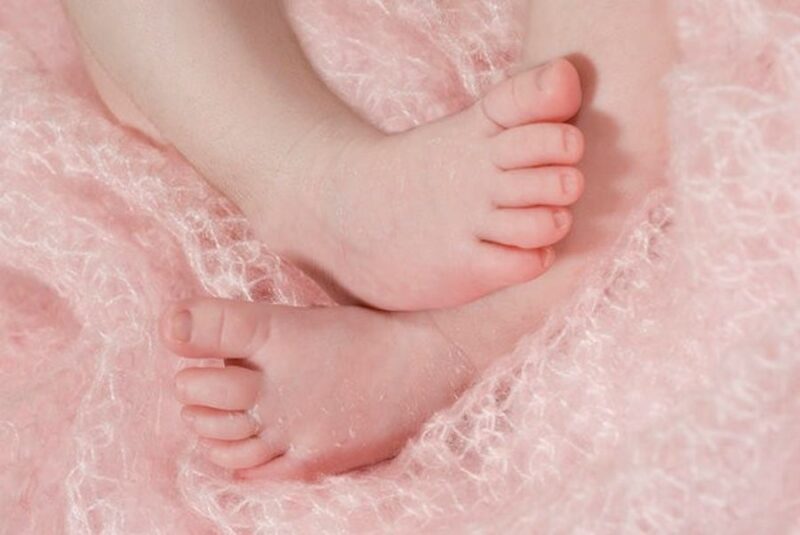The person conducting the Pirani score examination is seated, and preferably the mom should be holding the baby on her lap. The scoring process happens as the examiner tries to correct the foot. Using too much force during the process is not recommended since it would cause unnecessary discomfort. Six clinical signs are evaluated during the scoring, three in Midfoot and three in Hindfoot, and each is assigned a score. The scores are 0 for no deformity, 0.5 for moderate deformity, and 1 for severe deformity. The total Pirani score (between 0 and 6) is the sum of the three scores from Midfoot and the three scores from Hindfoot.
Midfoot score assessment
There are three clinical signs to examine:
Medial Crease (MC)
The first stage is to try and correct the foot by slightly raising it and simultaneously holding the second toe. The creases will be assessed depending on their depth. If the observed creases are fine and smooth, the score is 0. If two or more observed creases are deep but moderate, the score is 0.5. In the event of a single deep crease where you can’t see the end (bottom), the score is 1.
Curved Lateral Border (CLB)
The foot should be at rest in a relaxed position. Do the observation from the bottom of the foot (plantar aspect). Use a pen and hold it side by side on the lateral edge of the pinky toe. Interest is placed on the point where the lateral side diverges from a straight line. If it is observed that this side is straight following the pen without deviating, the score is 0. If it deviates when nearing the pinky toe, the score is 0.5. If the deviation starts from the calcaneus and the cuboid bones, the score is 1.
Lateral Head of Talus (LHT)
At first, do not try to correct the foot; then, touch the head of the talus (the lower part of the ankle joint) with your finger. Gently put the foot in a correct position without releasing the talus. If the talus is entirely under the navicular, the score is 0. If it feels like it is moving but doesn’t wholly go under the navicular, the score is 0.5. If it doesn’t move and does not go down, the score is 1.
Hindfoot score assessment
The three clinical signs to examine are:
Posterior Crease (PC)
The process and scoring are identical for the Medial Crease(MC) phase; the only difference is the part being assessed. The part considered here is the plantarflexion or the part directly behind the ankle. The scores depend on the depth of the creases.
Empty Heel (EH)
The test checks how much flesh can be felt from touching the heel. The basis of this investigation is how easy it is to feel the calcaneus ( the large bone forming the heel). If it is easy to feel and not far under the skin, the score is 0. If the bone is a bit far under a small layer of flesh, the score is 0.5. If it is hard to feel the bone because of a significant layer of flesh under the skin, the score is 1.
Rigid Equinus (RE)
The process starts by holding the knee as straight as possible and then correcting the foot’s position, placing it as parallel to the bed as possible. The score is found based on the degree of dorsiflexion observed (your foot’s backward bending and contracting). If the foot can easily bend past 90 degrees, the score is 0. If it is only barely able to reach 90 degrees, the score is 0.5. And the score is one if it is unable to bend at 90 degrees.


